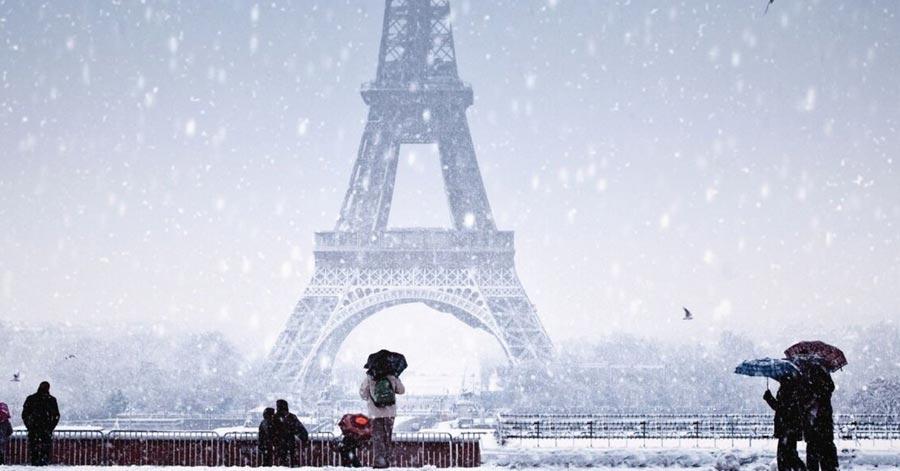When planning a trip to Europe during the winter season, it is essential to pack the right clothing to stay warm and comfortable.
Cold weather, snow, and rain are common during this time of the year, so having suitable winter travel clothes is important.
In this article, we will discuss the necessary clothing items to consider when traveling to Europe in the winter.

Dressing in Layers: The Onion Technique
One of the most effective ways to stay warm in cold weather is by dressing in layers.
This technique, also known as the onion technique, involves wearing multiple layers of clothing that can be easily added or removed as needed.
The key to dressing in layers is to choose high-quality clothing made from warm and breathable materials.
The Importance of Quality Layers
When dressing in layers, it is crucial to prioritize the quality of each layer.
Investing in high-quality pieces will not only keep you warmer but also reduce the number of layers needed.
Start with a layer of woolen underwear, followed by intermediate layers such as thermal shirts and pants.
Finally, top it off with a waterproof outer layer to protect against snow and rain.
Winter Travel Clothes for Europe: Recommended Clothing Items
To ensure you are well-prepared for the cold European winters, here are some essential clothing items to consider:
- Wool Socks: Bringing multiple pairs of wool socks will keep your feet warm and comfortable throughout your trip.
- Thermal Underwear: Invest in a set of thermal underwear or special winter underwear.
- Intermediate Layers: Pack a few normal T-shirts to serve as intermediate layers.
- Mid-weight Jacket: A mid-weight jacket is essential as an intermediate top layer.
- Thick Wool Sweater: Bringing a thick wool sweater provides an extra layer of warmth.
- Insulated Coat: Invest in a coat that can withstand freezing temperatures, water, wind, and snow.
- Snow Pants: Waterproof snow pants will keep you warm and protect you from the cold, especially in snowy conditions.
- Waterproof Pants: In case your snow pants are not entirely waterproof, it is essential to pack a pair of 100% waterproof pants.
- Wool Hat and Scarf: Bring a warm wool hat to cover your head and keep your ears warm.
Protecting Your Extremities
To protect your feet and hands from the cold, consider the following:
- Gloves: Layer your hands with gloves, including a pair of waterproof gloves as the final layer.
- Socks and Snow Boots: Wear a thin sock followed by a thick wool sock and snow boots to keep your feet warm and protected.
Ultimately
To recapitulate, when traveling to Europe in the winter season, it is important to pack suitable clothing items that will keep you warm and comfortable.
Dressing in layers, investing in high-quality clothing, and protecting your extremities are essential for a enjoyable winter trip.
By following these tips and recommendations, you can stay cozy and make the most of your European adventure, regardless of the cold weather.
Frequently Asked Questions About Winter Travel Clothes for Europe
What are the essential winter travel clothes for europe?
When traveling to Europe during winter, it's important to pack appropriate clothing to stay warm and comfortable.
Essential clothing items for winter travel in Europe include:
1. Winter coat or jacket: Choose a warm, waterproof coat or jacket to protect against cold temperatures and rain.
2. Sweaters or thermal tops: Layering is key in winter, so pack a few warm sweaters or thermal tops to wear under your coat.
3. Thermal leggings or jeans: Opt for thermal leggings or lined jeans to keep your legs warm.
4. Scarves, hats, and gloves: Pack accessories like scarves, hats, and gloves to protect your neck, head, and hands from the cold.
5. Wool socks and boots: Keep your feet warm and dry with thick wool socks and waterproof boots.
6. Thermal underwear: Consider packing thermal underwear for extra warmth.
7. Layering pieces: Pack lightweight, versatile layering pieces like long-sleeve shirts and cardigans.
8. Comfortable shoes: Choose waterproof and supportive shoes for walking in snowy or wet conditions.
Remember to check the weather forecast for your destination and pack accordingly.
Should I pack bulky or lightweight winter travel clothes for europe?
When packing for winter travel in Europe, it's best to focus on layering rather than packing bulky items.
Layering allows you to adjust your clothing based on the weather conditions and temperature indoors or outdoors.
Pack lightweight clothing items that can be easily layered, such as thermal tops, sweaters, and cardigans.
This will give you more flexibility and make it easier to fit your clothing into your suitcase.
Additionally, lightweight clothing is typically easier to wash and dry while traveling.
Don't forget to pack a warm coat or jacket for outer layer protection.
Can I wear jeans in Europe during winter?
Yes, you can wear jeans in Europe during winter.
However, it's recommended to opt for thermal leggings or lined jeans to keep your legs warm in colder temperatures.
Pair them with thermal tops, sweaters, or cardigans for layering.
Additionally, consider packing waterproof or water-resistant jeans if you anticipate encountering rain or snow.
Jeans are a versatile and comfortable option for winter travel in Europe, but it's important to dress appropriately for the weather conditions and layer accordingly to stay warm and comfortable.








Leave a Reply